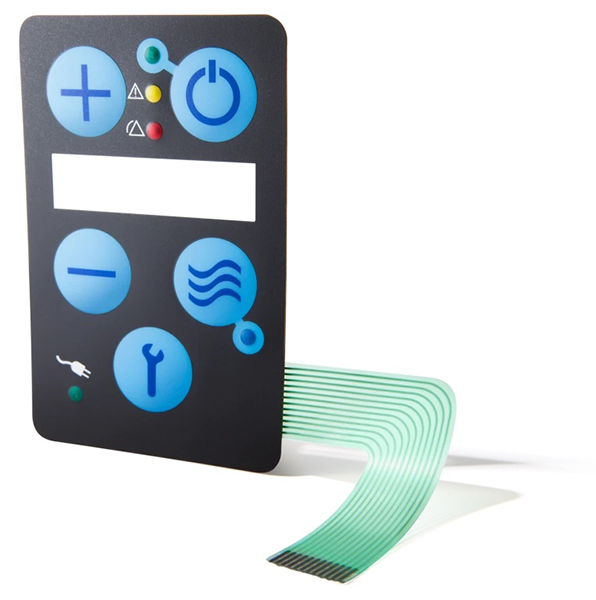ducts

Membrane Switch
A membrane switch is a momentary closure device used with a normally open circuit. They are called membrane switches because they are made up of flexible graphic and internal layers (or membranes) over a circuit printed on PET or etched on polyimide.
The layered nature of membrane switches allows a great deal of freedom for engineers to design and implement a very precise customer experience. Because of this flexibility, these user interfaces are used across a wide range of industries, including medical, consumer electronics, military/DoD, and aerospace
There are many parameters to consider in membrane switch design including the graphics, overlays, adhesives, and use cases.
MEMBRANE SWITCH COMPONENTS AND TERMS
There are many parameters to consider in the development of custom membrane switches, including the design, overlays, adhesives, and use cases. They can vary a great deal from simple to very complex. The components of a membrane switch will vary with complexity, but all contain some combination of the following:
Graphic Overlays
The overlay is the top layer of a membrane switch and is the interface between the user and the machine. Two of the most important issues to consider with graphic overlays are durability and environmental concerns. Graphic overlays can be made of polycarbonate, polyester, or acrylics, and your choice of material will depend on the desired level of durability and whether it needs to be protected against scratches, chemical abrasions, extreme temperatures, or actuation. For good tactile feedback in a switch, choose an overlay thickness between .006 and .010. This range will offer the durability to meet your requirements, with the sensitivity to provide a quality tactile effect.
Adhesive
The adhesive is important in two layers of membrane switches; it combines the switch to the graphic overlay and will bind the entire assembly to your product. There are numerous differences in adhesives; selecting the proper adhesive for application requires consideration of environmental, surface, appearance and other performance requirements.
Embossing
There are three basic styles of embossing; pillow, rim, and poly-dome. Depending on shape and size, logos and multi-level shapes can be embossed. Buttons can also be embossed for added tactile definition.
Circuits
Circuits can be printed using silver conductive ink, etched copper flex or printed circuit boards (PCBa’s).
Surface Mount Devices
Membrane switches can be designed with almost any SMT component embedded if needed, resistors, light sensors, and any low surface mount component if required.
Shielding
Proper shielding is necessary to meet ESD, EMI or RFI requirements.
Tactile and Non-Tactile
Membrane switches can be designed as tactile or non-tactile to achieve the desired product requirements.